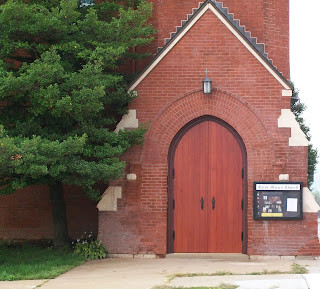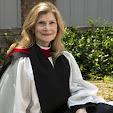After posting last week about the church's challenge of
building community among six different generational cohorts, I've seen two
other items about this topic. Yesterday
Jim Naughton's post appeared on Episcopal Cafe referencing a post by Pastor
Keith Anderson and the book Congregational Connections: Uniting Six Generations
in the Church by Carroll Sheppard and Nancy Burton Dilliplane. Anderson calls the situation a generational
logjam. He references Sheppard and Dilliplane's argument that we are trying to
squeeze six distinctive generations into the“old three-generation model (Elders,
Worker-Bees raising children, and Children)”
During the interval between this post and that I also had
the opportunity to listen to the series Losing Our Religion on National Public
Radio. What I heard more than once from
the group interviewed for that series is a strong interest in spiritual life
and engagement with community. I heard
more than one participant express admiration for the things churches do, like
supporting people in their spiritual practices, doing good works and creating a
space in which community can be built and engaged. What I also heard more than once were words
like I have never found a church where I felt at home. It's interesting to note
that a lot of churches want desperately to create that "at home"
feeling for people in their 20s and 3os.
Some of them are trying various things to make it happen, others are
just talking about it. A lot of them
want it so badly that it blinds them to urgent mission opportunities that are
begging them to take action.
The parish where I serve now, St. Mary's in Kansas City,
Missouri has been able to develop a parish community that unites all six,
generations that are alive today. I
wish I understood more clearly how it happened, but much of it is a holy
mystery. Seven years ago, I did a
"back of an envelope" calculation of the mean age of our
parishioners. It was around 68 years. It included a member who was, at the time, 98
years old. But taking her age out of the
calculation reduced it only by a couple of years. I did it again four or five years later and
it had dropped to 48 years. It's younger
than that now.
If you asked one of our parishioners where the center of our
parish is, most of them would say something about our worship and our outreach
ministry. We have a 150+ year history as
Kansas City's anglo-Catholic parish. We
continue in that tradition with bells and incense every week, an ambitious
choir composed primarily of parishioner volunteers and led by one as well. Our parish liturgist, also a volunteer, keeps
our worship well-grounded in the Book of Common Prayer and engaged with the
cycle of the church year in a way that people are able to connect with their
own lives. The high liturgy gives us
regular opportunities to engage sense and memory in worship. Every Saturday we open our doors to about 200
people from the surrounding community who come to the church to eat lunch and
get a bag of groceries. Our hunger
relief ministry has grown over the past 20 years to serve more than 600 meals
every month and provide nearly 80 households with a weekly bag of
groceries. The hunger relief ministry
has been a point of engagement with many newcomers to the congregation.
Ten years ago our parish was on the brink of closure. It was in serious financial trouble and
suffered from conflict that seemed intractable.
The anger and ill feeling drove parishioners away and did little to
motivate one-time visitors to return.
But the parish is located in downtown Kansas City which was, at that
time, beginning to redevelop. The
residential population was growing and the decision was made to try to rebuild
the congregation. Ten years later we are
growing, organizationally healthy and more or less financially stable.
We didn't set out to attract young people as members, but it
happened. The population of our
neighborhood is among the youngest overall of any neighborhood in the
city. What we set out to do is be a
community that people want to be a part of.
On Sunday mornings we're friendly without being aggressive. We allow people to engage to the extent that
they want to. If a visitor stays for
coffee hour we make sure that a parishioner introduces them to people. When they visit again they have someone they
know to talk to. Our service leaflet is
easy to follow.
One of the changes that helped St. Mary's retain its younger
new members was the relative absence of an "old guard" in control of
the workings of the parish. The loss of
membership that the congregation suffered seven to ten years ago left its
leadership more open and fluid than is characteristic of more stable
parishes. Before long half of the
members the Vestry of St. Mary's, our council of lay leaders, were younger than
45. Anyone will tell you that is
unusual. A friend of mine, a parishioner
at one of the smaller churches in our diocese, was told that no one could be a
member of the Vestry in their church until he/she was 50 years old. That edict came from someone who was well
over 60 at the time. That kind of dues
paying might make sense to a member of the silent generation, but for Gen-X
it's an invitation to look for a more encouraging environment.
One of our parishioners, the husband of a couple who retired
in Kansas City and bought a downtown condominium said "we became members
of this church because we knew you needed us." That's true.
There's something to do or to offer at St. Mary's for anyone who wants
to take part. Creating that environment
of welcome and opportunity to serve was intentional. It has nearly doubled our membership and
Sunday attendance in seven years.
I believe that creating a welcoming community intentionally
around mission and worship eased the way for us in inter-generational
relationships. We did make some
modifications in our liturgy in order to make it more accessible to visitors,
but the appeal was not intended to be specific to a particular age group; it
was meant to make it easier for new visitors to participate. In some ways our high liturgy probably made
it easier for us to retain an integrity that has cross-generational
appeal. We take it seriously and that
shows. We are true to the roots of our
parish, not because we can't break that habit, but because we recognize and
honor what that has meant to the parish and the larger community for a century
and a half.
Six generations share in setting the priorities for St.
Mary's. To some extent adults make
decisions on behalf of our dozen or so members who are eight years old and
younger, but all of them gather with us at the Eucharist. The parish hall of our beautiful but rather
inflexible 125-year-old building is their Sunday school room. When the adults come to coffee hour after the
Eucharist, many of them make their way by the corner of the room to see what
the children did that day. What seems
important in our parish is that no one individual, family or generation is
singled out. Even a few years ago when
we had only one or two young adults attending regularly, members of the parish
welcomed them and facilitated their participation without restriction or
favoritism.
I want to note again that St. Mary's did not set out to
attract new members of any particular generation. We did work intentionally to make our parish
visible within our neighborhood in a variety of ways. A large and growing proportion of our
neighborhood's residential population is in their 20s and 30s. Our neighbors have found their way here and
felt at home.
At diocesan meetings I've observed members of parishes
located in towns where people like to retire expressing the concern that their
churches don't have a "future" because they don't have large numbers
of young families among their members.
They seem to lose sight of the fact that whether or not there will be a
steady stream of infants for them to baptize, children nurtured in the faith by
other congregations will eventually reach the age of 65 and live happily
thereafter.
A musician friend of mine who used to teach singing told me
what he used to tell his students who expressed the desire to sing
beautifully. He said "Find what is
beautiful within yourself, nurture and honor those parts of yourself and then
sing." Seven years ago, when the
congregation of St. Mary's set out to rebuild its health, we looked at all of
the things we had to offer to people who would want to be members of our
church. We made ourselves ready and then offered them with an attitude of
welcome and generosity. A remarkable
number of new members have accepted those gifts and joined us in offering them
to others.



